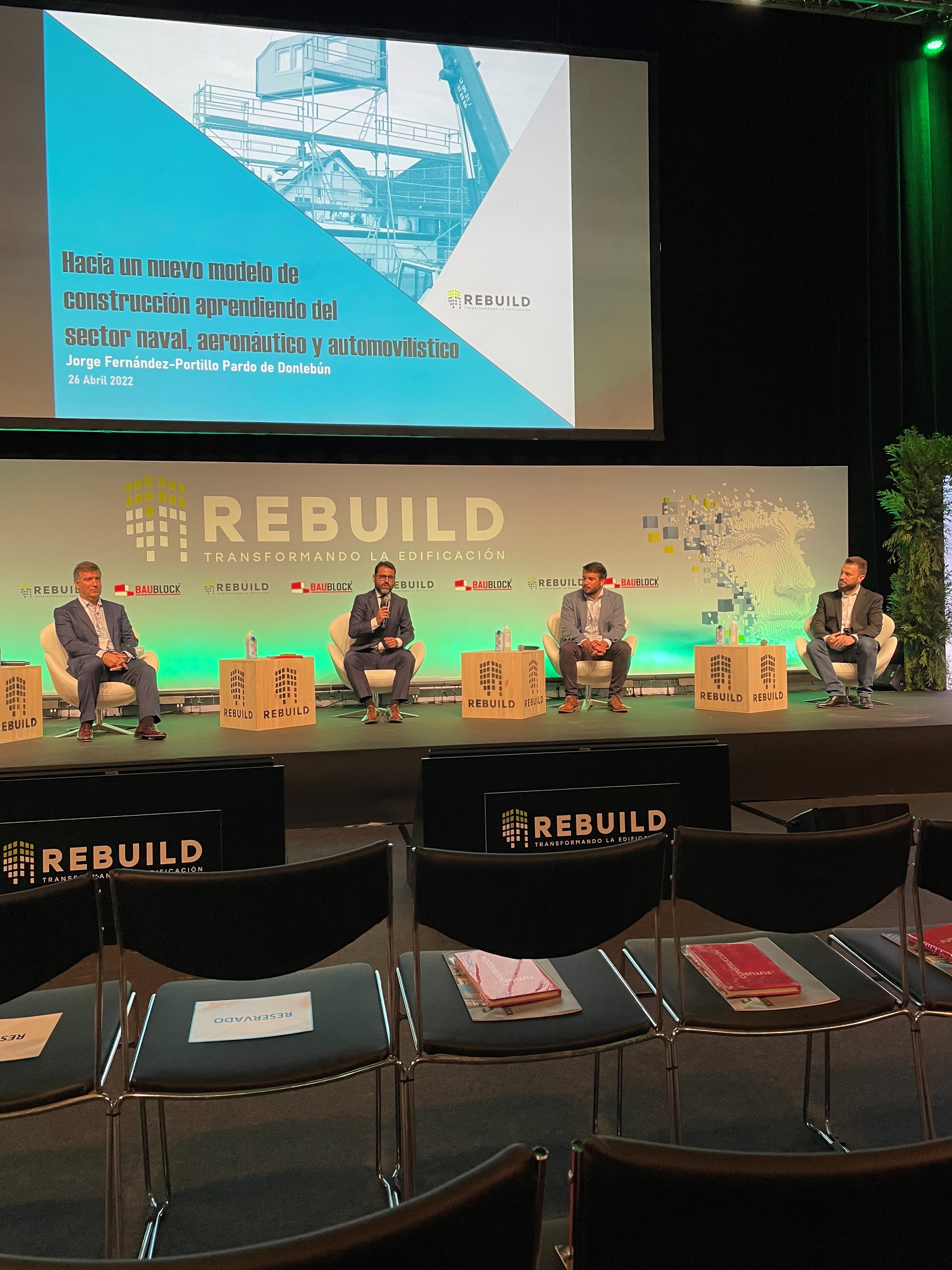Rebuild 2022 Madrid | The foundations are set for a promising construction industry
Posted on 03-05-2022
In a rapidly changing world where the world’s urban population is increasing by 200,000 people per day and the global carbon emissions of the construction sector are 30%, there is a pressing need to provide an affordable and sustainable housebuilding industry. The integration of modern innovative techniques in the construction sector can allow the rise of productivity and a higher democratisation of the built environment, having a direct impact on global economic, environmental, and societal issues.
The Rebuild 2022 Conference that took in Madrid was an exciting event centred in how to boost the construction industry through innovation, circularity, and private-public investment. I found interesting to see the varied perspectives from different stakeholders of the construction business from construction companies, suppliers and fabricators to public entities, developers, architects, and software designers. All of them showed their particular response to the challenges the sector is undergoing from their own experience. Nevertheless, their different approaches converged in the necessity to increase the optimisation of processes, the required collaboration between all stakeholders and the need to embrace a full digitisation of the construction industry. The main topics discussed during the three-day conference were industrialisation, digitisation, and sustainability.
Industrialisation
In order to meet the demand that the construction industry requires, we cannot continue building in a traditional way. An industrialisation of the business is needed to achieve the scalability of solutions and the adoption of lean construction methods.
It is necessary to unify the architecture design with the constructive process from the initial stages. The selection of the MMC (Modern Method of Construction) and the logistics will have an influence on the design. Therefore, it is essential to invite the contractor, engineers and fabricators to collaborate with the developer and design team from the beginning to allow for an integrated project delivery and to optimise the manufacturing process.
Most of the companies working in the housebuilding industry agreed that a system based on 2D components prefabricated off-site was the most effective currently, as it allowed for greater flexibility while at the same time reduced the construction time and minimised errors, keeping the transportation costs lower than with 3D elements. A few companies advocated that the use of 3D elements was beneficial when the room was a very compact one (e.g. bathrooms) and there were a high number of identical instances (e.g. hospitality industry).
Digitisation
The fourth industrial revolution has accelerated dramatically the productivity in other industrial sectors, as the automotive, naval or aerospace, while in the construction sector the levels of automation are generally still low. In these industries, the use of the digital twin is the main driver of development and continuous learning.
Several industry professionals pointed out that the lack of digital implementation in the construction industry has been one of the reasons why industrialised construction has not been broadly implemented in multi-family housing yet in Spain. Construction has always been a collaborative practice but without an adequate digitisation, it will remain fragmented. New innovations in technology should be implemented into the housebuilding industry as an added value to the sector and to the user. Some examples that could help in the digitisation of the industry would be the use of digital twins, allowing for traceability and monitoring throughout the design and construction process, increasing precision and minimising waste; the use of BIM as a design tool, data collector and collaborative environment, being able to give precise quantities and pricing from initial design stages, avoiding important price variations; or the introduction of automation and robotics to substitute manual labour in repetitive and dangerous activities.
Sustainability
Decarbonization, net-zero buildings, and the use of wood as a circular material were some of the hot topics on the sustainability agenda. Likewise, the evaluation of LCCA (Life Cycle Cost Analysis) and LCA (Life Cycle Assessment) have become vital to be able to make the right choices from the beggining. Sustainability, innovation, and technology are essential to overcome obsolescence, but to do so it is necessary to monitor the consumption throughout the entire building’s lifespan.
In the race against climate change, wood is gaining greater support in the Spanish construction industry. A sector that has been for decades strongly defined by its concrete production, is starting to become aware of the advantages of building with circular materials. The industry has not only recognized that wood is a renewable material that retains heat, absorbs CO2, lasts longer, and can be recycled, but as well that it has a positive effect on the user’s physical and mental health, improving their wellbeing. Important housing developers are planning to reduce the CO2 emissions by 80% in their ongoing projects by using hybrid construction in wood, by increasing their level of industrialisation, and by improving their digitisation. Construtech companies are offering end-to-end services using platforms that integrate through technology all the stakeholders in a sustainable supply chain.
The construction sector has opened their eyes to realize what architects have been pursuing for a century. A user-centric approach where the wellbeing, passive design criteria and the planet are key in the decision-making. With the difference that today we have the technology and innovation to accept these challenges in an efficient way, monitoring and measuring our progress to take firm steps towards a more environmental, societal, and economic sustainability.
The Rebuild 2022 Conference showcased that the construction sector is in an exciting moment of transformation. The industry has laid the foundations to progress into a more industrialised, collaborative, efficient, and technological sector, to be able to offer sustainable and democratic quality housing at an affordable price.


